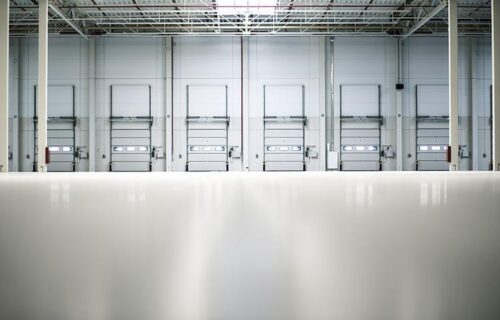Demand for warehouse space will increase. Already 3 out of 4 tenants plan to expand their supply chains and occupy more of this type of space. Not only top locations will be in the crosshairs. 54 percent companies will go beyond the main centers and look for warehouses elsewhere, according to the CBRE report “European Logistics Occupier Survey 2022”. Tenants in the warehouse industry, apart from declining availability, face several other challenges. 84 percent has experienced disturbances in supply chains, rising prices, lack of qualified staff and concerns about new regulations related to environmental protection are also problems.
“Over the last few years, warehouses have been going through a period of continuous growth. The pandemic contributed the most to this, because it was an impulse for the rapid development of e-commerce. Of course, the sector is facing various global problems that are a consequence of, inter alia, the war in Ukraine or the zero-COVID policy in China. The most important of them are disturbed supply chains, rising prices or limited availability of goods and raw materials. This will affect demand, supply and investment. Only in Poland, in the first quarter of 2022, warehouse space exceeded 24.5 million sq m, and 4.5 million sq m is still under construction. However, it is still not enough. The high demand for warehouses can be seen all over Europe. As many as three-quarters of companies will be looking for them,” says Beata Hryniewska, Head of the Warehouse and Industrial Agency at CBRE.
Demand is still record-breaking
The CBRE report “European Logistics Occupier Survey 2022” shows that as much as 75 percent. companies in Europe, including Poland, plan to improve their supply chains, for which warehouse space is essential. Among these companies, almost half want to develop their warehouse and industrial space by less than 10 percent, and the rest by more than 10 percent. Every fifth company does not plan any changes, and only 5 percent. thinks about reducing the currently available warehouse resources. This shows that the demand for warehouses is not sleeping, although it can be expected that due to the rising prices of materials and economic uncertainty, the supply is unlikely to meet tenants’ expectations.
Companies are also aware that the availability of warehouse space in top locations is shrinking rapidly. Therefore, already 54 percent. of them indicates that it intends to look for places for warehouses outside the most important logistics centers in large cities or close to large urban centers. Slightly over a third, i.e. 38 percent. indicates that it will focus on centers other than the main ones only when availability drops to zero. However, this can happen quickly. For now, most of the demand in Poland is concentrated on voivodeship capital cities, preferably in an industrial setting, with a good location and in the first line of buildings. However, there is not enough land of this type to cover the entire demand for warehouses among tenants.
Challenges for the warehouse sector
Companies that use warehouse space and are their tenants indicate that currently the three main challenges of the sector are: for energy and work, the lack of qualified employees and new regulations related to environmental protection. Outside the top three, but still high, were problems with the availability of storage facilities and land, and disruptions in supply chains. In the case of the latter challenge, already 84 percent. companies have experienced supply chain disruptions in the warehouse sector. Moreover, 32 percent. is convinced that these problems will not end in 2022, but rather in the next.
Methodology: the study was conducted in January-March 2022. It was attended by 100 respondents – experts in the warehouse industry in a specific company. Each company had warehouse space in at least 4-5 European countries. 22 percent of respondents had warehouse space in Poland.
